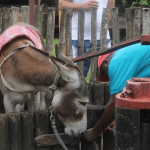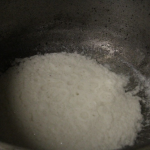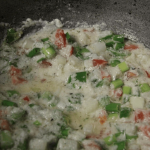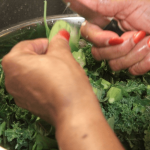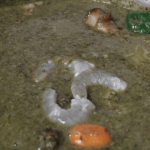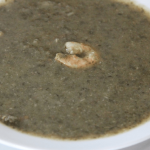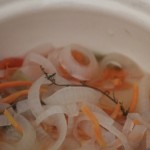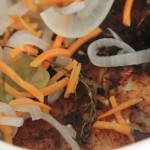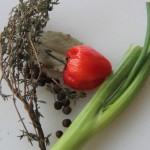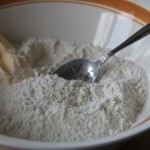I love legumes and turn to them whenever I feel like taking a break from meat. Mostly, I make stewed peas, which is red kidney beans that’s cooked with spices and coconut milk.
Traditionally you make stewed peas with meat – pig’s tail, corned beef or pork, or chicken. But a few years ago, perhaps as a result of the popularity of the Rastafari’s ital way of cooking, which excludes meat, a meatless variation started cropping up on restaurant and cook shop menus.

But you don’t have to be vegetarian to like meatless stewed peas. Red kidney beans are so flavorful, you can enjoy it as a meatless stew or soup without much loss of flavor.
Making stewed peas
Soaking the peas overnight reduces cooking time. But if you’re unable to and have a pressure cooker, you can have them cooked in about twenty minutes. I love having a pressure cooker handy precisely for this reason.
The main ingredient in stewed peas is red kidney beans. As I explained in a previous post, what we call peas are really beans so I apologize for any confusion. Sometimes, I add carrots and spinners or potatoes, other times just carrots, especially when I’m watching my sugar intake as spinners (long dumplings) and potatoes raise blood sugar. Carrots can too, so keep that in mind if you’re diabetic.
For seasonings, I use scallion, thyme, Scotch bonnet peppers, pimento berries, garlic and a few thinly sliced strips of ginger. I love slightly sweet taste that coconut milk adds to any dish but you can leave this out if you prefer.
- 1 or 2 cups peas
- 1 or 2 medium carrots (chopped)
- 1 sprig of thyme
- 1 stalk of scallion
- 1 Scotch Bonnet pepper
- 1 tbsp. Pimento Berries
- 2 cloves garlic
- 1 small Irish potato (optional)
- 1 can coconut milk (optional)
- 2 Bay leaves (optional)
- Water – enough to cook peas
- Salt and freshly ground black pepper to taste
- Spinners (long, thin dumplings - optional)
- Pick out defective or broken peas and wash. Soak overnight. The next day, drain off the water, pour peas into a pot, cover with cold water, add garlic and salt to taste and put to boil. (If you’re unable to soak peas overnight, wash, add enough cold water to cover and put to boil.)
- Cook for about an hour or until peas are soft.
- Add seasonings – pimento, scallion, Scotch Bonnet, black pepper, and coconut milk.
- Peel, chop and add potato and carrots.
- Add thyme, and Bay leaves (tie together with kitchen twine or put in cheesecloth). Cover and let simmer for about an hour or until you have a nice, thick stew.
- Remove Bay leaves, thyme and pimento berries before serving.
Stewed peas is really an abbreviated version of red pea soup. It is always served with white rice but it’s just as great with brown rice, and greens – steamed callaloo, spinach or broccoli, or a garden salad.
How to Join the FoodieTuesday Linkup
Join the FoodieTuesday linkup by –
- Posting a foodie photo on your blog
- Adding the link to your foodie post in the link tool at the bottom of this post
- Leaving a comment
- Tweeting this post using the hashtag #FoodieTuesday
Hope to see you at FoodieTuesday!
 Loading InLinkz ...
Loading InLinkz ...







